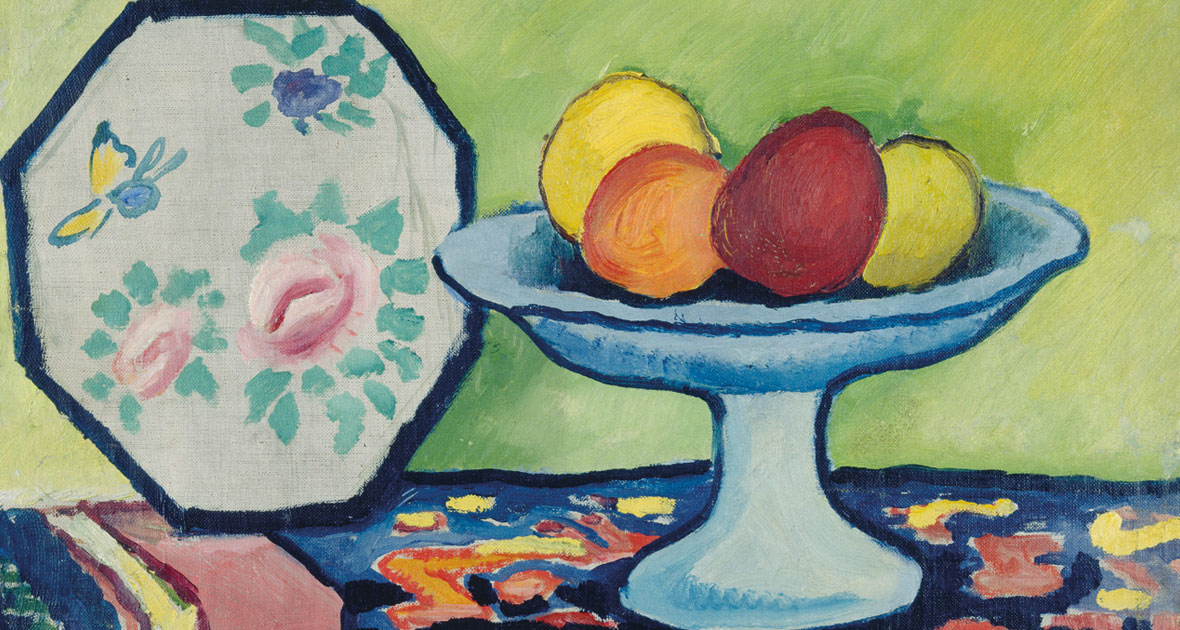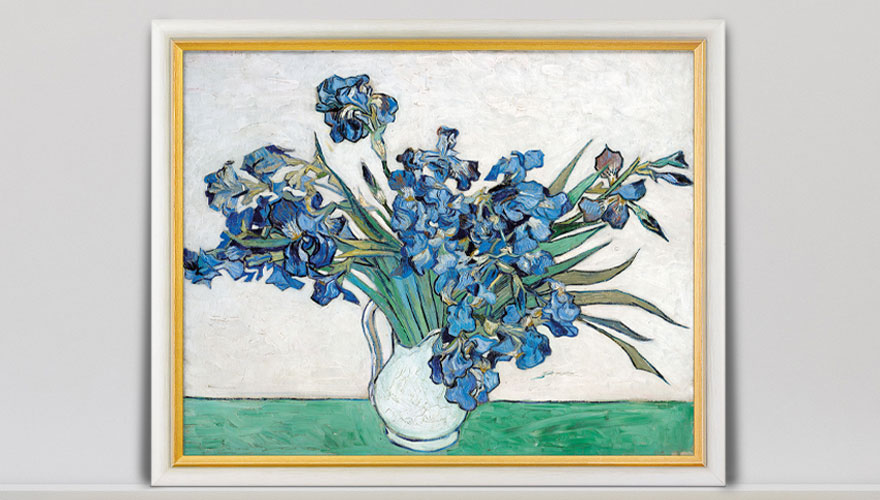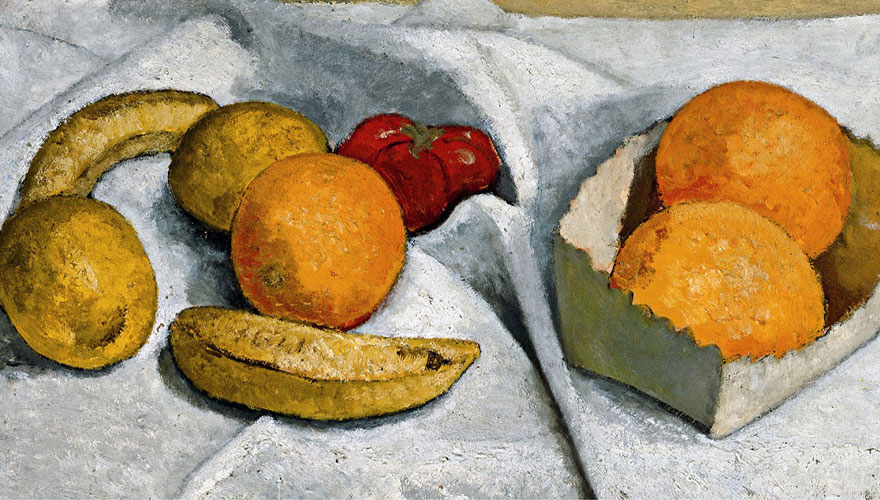
Still Life: The Beauty of the Ordinary
Pablo Picasso's "Nature morte aux tulipes" (Still Life with Tulips), Paul Cézanne's "Bouilloire et fruits" (Jug and Fruit) or Vincent van Gogh's "Vase avec marguerites et coquelicots" (Vase with Cornflowers and Poppies) - these still lifes were sold for over 40 million dollars and are thus ranked among the most expensive paintings of all time. This shows how incredibly popular this genre has been for artists and the public over many centuries. This is perhaps because still lifes do not depict famous personalities, dramatic sunsets, or battle scenes, but rather everyday objects, which are, however, arranged in a very aesthetic and virtuoso manner. Flowers, fruit, kitchen utensils, game, fish, books, candles, clocks, and insects are typical objects. The style, the subject of the artwork and the desired symbolism influence the decision of the choice, the quantity, and the arrangement of the objects. The term "still life" goes back to the Dutch "Still Leven", which first came into use at the beginning of the 18th century. At the same time, the French "Nature Morte" also gained popularity. Many famous artists of the last 300 years have dealt with this subject, for example, Auguste Renoir, Claude Monet, Lovis Corinth, Alexej Jawlensky, Max Beckmann, Paula Modersohn-Becker, Giorgio de Chirico, Kurt Schwitters, Andy Warhol, Markus Lüpertz or Jeff Wall.

The genre of still life has been a popular subject since the 17th century
The depiction of everyday objects in works of art has been known since antiquity, but it took a few more centuries for the still life to develop into a genre on its own. Its beginnings date back to ancient Egyptian and ancient Greek, and Roman cultures. From this time, wall paintings, mosaics and reliefs are well-known, and they already approached the idea of the still life very closely. Similar works are known from the following epochs, such as the Renaissance. However, for a long time, the arrangements of objects were essentially only used as staffage in scenes in which people were the centre of attention. Only from the 17th century onwards we can speak of the development of the still life into an independent pictorial theme. Starting in the Baroque epoch, more and more artists throughout Europe composed their pictures from simple everyday objects. Especially in the Netherlands, but also in Spain and Italy, these paintings became increasingly popular. During the 18th century, the interest in still-life painting flattened out somewhat with Classicism. In the 19th century, however, it was mainly the Impressionists who took up this genre again with studies of flowers, fruit, weapons, or laid tables. In the following epochs, the still life was finally able to establish itself as a subject, and artists kept finding new and contemporary interpretations. For example, in the painting of the early 20th century, both the Cubists, such as Pablo Picasso and Georges Braque and the Expressionists of "Brücke" and "Blauer Reiter", took up this motif. Still life remained an influential genre in subsequent styles such as Surrealism and Pop Art. With the "Readymades", Marcel Duchamp developed three-dimensional versions of the still life. Today, the idea of aesthetically draping and depicting various everyday objects is found not only within art but also in other areas of life. Especially in photography - particularly in advertising photography - the staging of everyday objects has developed into its own discipline. And since smartphones have high-resolution cameras, it is hard to imagine the timelines of Facebook, Instagram, and other social networks without photos of meals.
What Is a Still Life? The Characteristics of a Multifaceted Genre
Even though still life has been interpreted very differently throughout the art epochs of the last centuries, its characteristic features have barely changed. Until contemporary art, in which still lifes are interpreted in a modern way, these paintings almost exclusively show inanimate objects of everyday life. Flowers, fruit, vegetables, hunted animals and fish, baked goods, crockery and cutlery, weapons, books, or musical instruments are painted particularly frequently. The great skill consists of the careful arrangement of the objects, their illumination, and their painterly design. Although some of the still lifes are executed in great detail, the aim of this painting style is not to depict the objects as realistically as possible. Rather, they only feign verisimilitude and always provide an illusion of reality. In their often perfect, opulent, and sensual execution, the artists allow the paintings to become a mirror of the longings and desires of the viewers.
But still life also features some peculiarities concerning the painting process. In contrast to other genres, such as portraits or landscapes, pictorial objects do not move or change, even over a long period of time. For this reason, these motifs are particularly well suited for extensive study and examination of the objects. Therefore, many artists used still lifes to practise their skills in depicting space, light, colour composition and perspective. Vincent van Gogh is said to have used this genre to try out different painting and representational possibilities and to experiment with the application of colour. "Painting still lifes is the beginning of everything", the Dutch painter supposedly once said.

The Symbolism of Objects Plays an Important Role in Still Lifes
In addition to the artistic depiction and staging of the pictorial objects, the symbolism of the objects is of great importance in still lifes. Both as a whole and individually, many pictorial objects refer to a second level of interpretation. Large bouquets or fruit, for example, are regarded as a sign of prosperity, especially if they are obviously of exotic origin. Hunting still lifes depicting wild animals and weapons also represent a certain luxury, as do paintings with richly laid tables. But individual objects can also carry important messages for the picture's theme. For example, sugar stands for lust and lemon for moderation. Bread and wine are seen as references to the Christian supper, and oysters symbolise sinful temptation. Ivy and ears of corn can indicate eternal life and rebirth, and blooming flowers usually symbolise love and beauty. In addition, certain types of flowers have more specific meanings, such as carnations or thorny roses, both of which are meant to remind us of the suffering of Christ. The so-called vanitas paintings have developed into a sub-genre of their own. Through various objects, the transience of the human being is pointed out to encourage the viewers to reflect morally on their lifestyle and their existence. A skull, for example, unmistakably indicates the end of life. Somewhat more subtle but similar in their symbolic meaning are burning candles, clocks or hourglasses, broken glass, wilting flowers, rotting fruit as well as beetles, worms, or flies. However, in the history of still life, the symbolic content and the instructive character have become increasingly insignificant and have taken a back seat to the aesthetic pictorial impression. However, the characteristic pictorial elements have remained and can still be found in contemporary works that interpret still lifes in a modern way.
